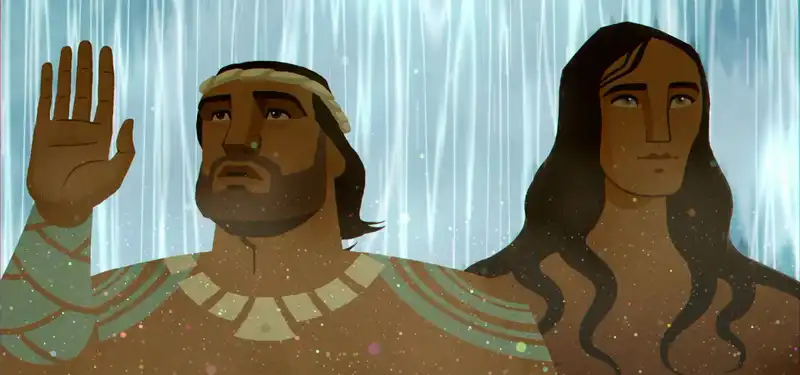Nov 9, 2023
2024 Academy Award Short Film nominees: Aik-ne director Daniel Sousa, Dean Hammer and Joe Wilson.
Welcome to the spotlight series of Cartoon Brew, which focuses on the 2024 Academy Award-nominated animated shorts. There are several ways in which a movie can qualify. Use these profiles to focus on Oscar-qualified and award-winning films at Oscar-qualified festivals.
今日のショートはAik.ne Directed by Daniel Sousa, directed by Dean Hammer and directed by Joe Wilson. The film won the Academy Award for Best Animated Short at the New Hampshire Film Festival Jury Awards.
This short story tells the story of a brave island warrior who was wounded in battle with foreign invaders. After the warrior falls into a mysterious underwater world, he is saved by an octopus who transforms into a handsome young man. 二人はなりますaik.ne
Cartoon Brewing: A good part of this film takes place underwater.
Daniel Sousa: Dealing with underwater scenes was certainly challenging in terms of character movement. As an animator, you are always trying to give weight to the character, but in a weightless underwater environment, it was also a fun puzzle to understand how the character navigates and passes water resistance, and since color and light behave differently in the water, it also deals with the effects of the color palette and atmosphere. Regardless of the technical challenges, what I wanted to direct the film in the first place was that it was a love story that I hadn't worked on before. So, the biggest challenge for me is to develop a character with an incredible arc, a universal story without words that a wide audience can understand and relate to, and to do it all within a 12-minute screen time.
What was it about this story or concept that forced me to connect with you and direct the film-
Dean Hammer: We made this film because we believe that telling a strange love story with a happy ending is a form of resistance. The idea was that even as a new wave of hatred and discrimination grew against so-called "groomers and pedophiles" like me and my husband, Joe, a short before us, we wanted our next piece to show what happens when people are free to love the person they love.
The problem was that existing myths did not fit the bill, so they had to write their own myths. The inspiration came in the blink of an eye during a dive in the sea near our home. Deep below the surface, all the noise and anger above disappeared, and we experienced a unique, quiet sense of togetherness. It was the feeling that we wanted to tell the story and the setting that we wanted to live the relationship.
What did you learn about the production side, the filmmaking side, the creative side, or the subject through the experience of making this film-
Joe Wilson: The biggest lesson I've learned from this film is the power to tell stories without words. Pantomime frees us from explaining what's going on and lets the viewer experience what the protagonist does on a visceral level. It also makes the film more accessible and concentrates visual attention; every look, gesture and movement is important.
But the biggest, unexpected advantage was that it freed us to imagine a world that is difficult to describe in words because it does not yet exist. A world free of homophobia and prejudice, the relationships we form and the trust we give are not limited by someone or something, but the strength of our love. それが私たちが見せたい世界ですAik.ne .
You can explain how you developed your visual approach to cinema- why you settled on this style/technique-
Daniel Sousa: From the beginning, we were informed from the Hawaiian environment that Dean and Joe were very familiar with, but it wasn't. For I worked from Rhode Island and needed a lot of references. We wanted to explore the rich underwater colors of coral reefs and the majestic landscapes of the islands. In much of my previous work, the color palette was very monochromatic, so it was a whole new way to approach colors. For the movement, we saw an old Tarzan with a beautiful tandem underwater dance and hypnotic movements as octopus tentacles swam and crawled. The visual language of the film needed to be agile, not too limited by abstract design rules, as the story covered a wide range of locations and character interactions. Instead, we focused on light as a comprehensive design principle that helped set the tone for each dramatic moment.
.



Post your comment